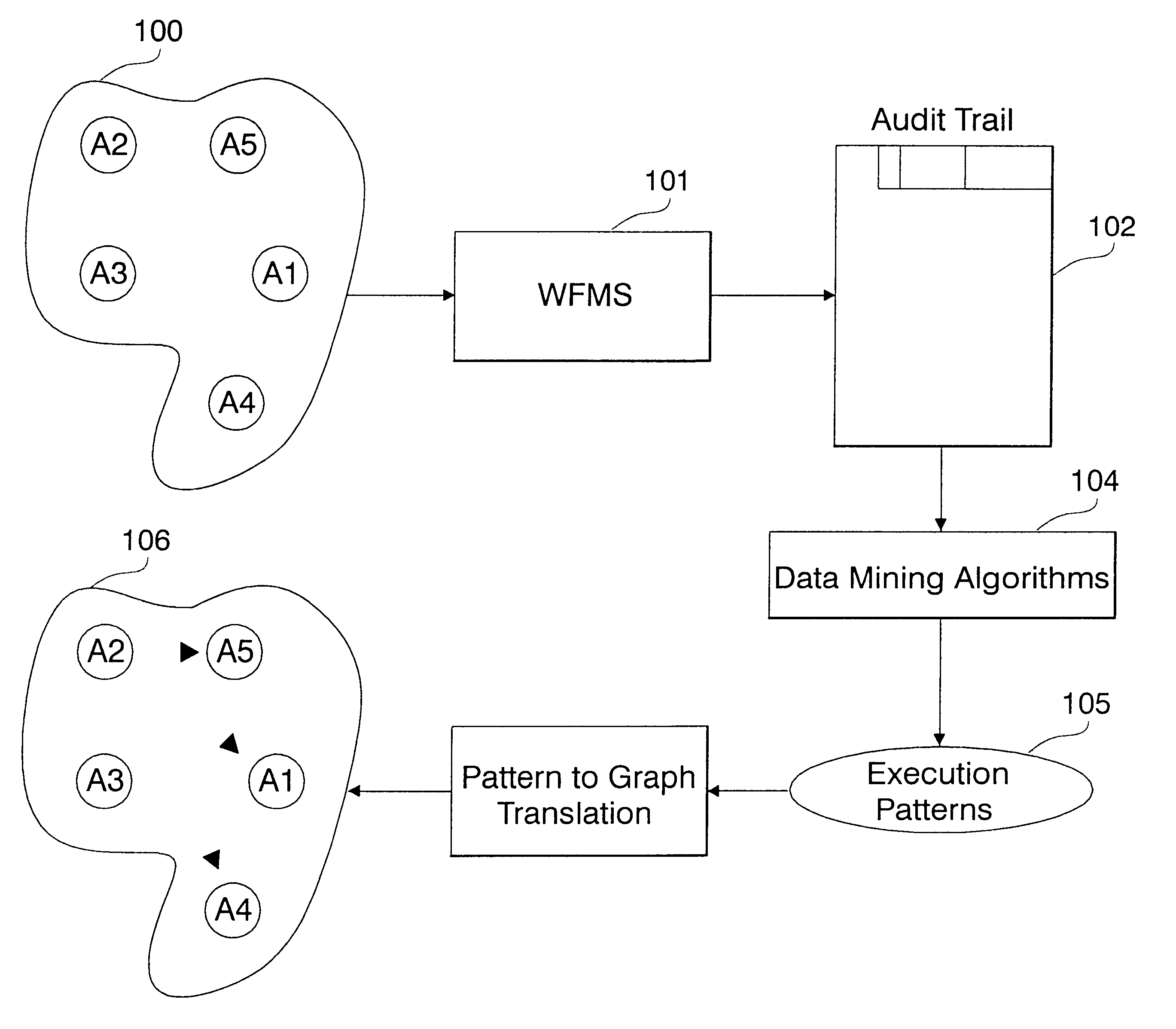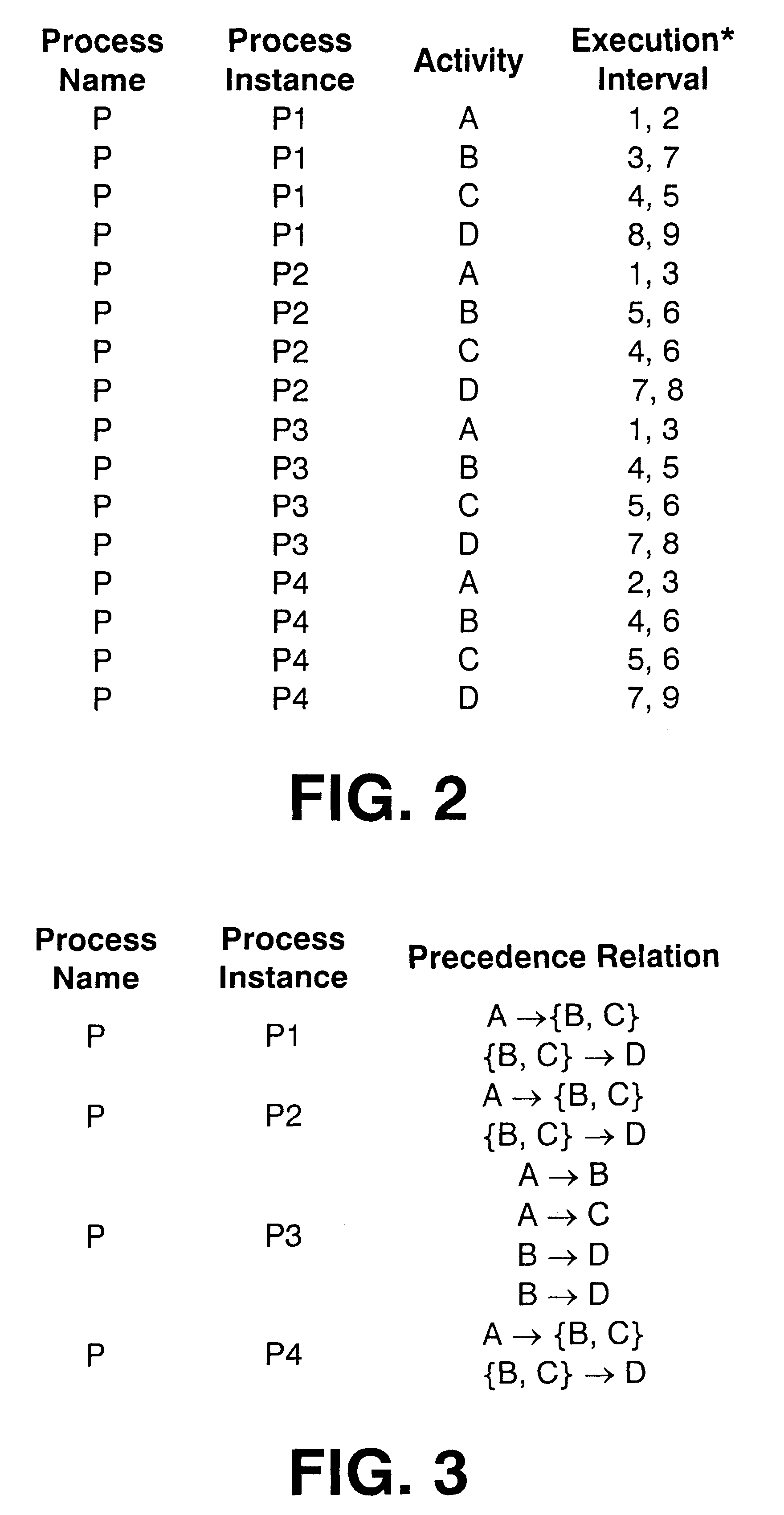Deriving process models for workflow management systems from audit trails
a workflow management system and process model technology, applied in the field of computer systems, can solve the problems of not being able to exploit data mining and olap technology for wfms, not being able to meet the needs of conventional product design process, and not being able to identify global interdependence by single person in an enterpris
- Summary
- Abstract
- Description
- Claims
- Application Information
AI Technical Summary
Problems solved by technology
Method used
Image
Examples
Embodiment Construction
The present invention is illustrated based on IBM's FlowMark workflow management system. Of course any other WFMS could be used instead. Furthermore the current teaching applies also to any other type of system which offers WFMS functionalities not as a separate WFMS but within some other type of system.
It has to be stressed especially that using a WFMS for producing the audit log for applying OLAP or data mining technology is not vital for the current invention. Other techniques like an appropriate wrappering or instrumentalization of existing applications might me used for generating the required log records. But using a WFMS for this purpose is convenient in many situations. Thus, without limiting the scope of the current invention, the exploitation of a WFMS for what follows is assumed.
The following is a short outline on the basic concepts of a workflow management system based on IBM's FlowMark WFMS:
From an enterprise point of view, the management of business processes is becomi...
PUM
 Login to View More
Login to View More Abstract
Description
Claims
Application Information
 Login to View More
Login to View More - R&D
- Intellectual Property
- Life Sciences
- Materials
- Tech Scout
- Unparalleled Data Quality
- Higher Quality Content
- 60% Fewer Hallucinations
Browse by: Latest US Patents, China's latest patents, Technical Efficacy Thesaurus, Application Domain, Technology Topic, Popular Technical Reports.
© 2025 PatSnap. All rights reserved.Legal|Privacy policy|Modern Slavery Act Transparency Statement|Sitemap|About US| Contact US: help@patsnap.com



